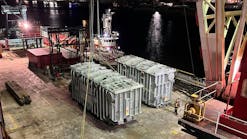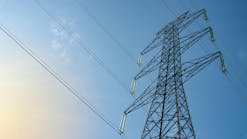The summer of 22 has been one for the record books. There have been floods, droughts, heatwaves, and wildfires throughout the northern hemisphere. Global climate change is taking its toll by making extreme weather events more frequent, and more intense. It was a summer that the U.S. was hit with two 1,000-year rain events within two days. The U.K. reported that at least 34 locations set new all-time temperature records with five of them exceeding 104ºF (Fahrenheit) or 40º Celsius (C). Even the roads melted during the Tour de France race.
Meeting power demands has also proven to be a challenge because the models had no way to predict the shifting weather patterns brought about by climate change. Talk about a game changer! Dealing with unexpected demands have required utilities to ask large and small consumers alike to curtail their usage and conserve energy. They also activated demand response programs to reduce usage.
An interesting press release from ERCOT (Electric Reliability Council of Texas) said that its daily peak demand set summer peak records and the council had to ask customers to cut back their electricity use to avoid rolling blackouts. The Texas bitcoin mining industry responded by reducing their operations, which freed up about 1,000 MWs. That’s a lot of power for bitcoin mining and it’s resulting in some negative feedback.
Global Warming Hits Home
While all these events were taking place, I focused my attention on my electricity consumption. The Wolf den was having problems with its HVAC (heating, ventilation, and air conditioning) system. The HVAC was not working efficiently, so I called my HVAC servicing group for help.
The first tech told me the HVAC was old and needed to be replaced. That didn’t fly. A second tech was dispatched, and he said the HVAC was too small for my house. It needed replacement: Wrong. Third time was a charm: The next tech found the problem, and the HVAC was fixed, but I was still considering tech #2’s comment and climate change.
Could my 10-year-old HVAC be too small for today’s increasing temperatures? Typically, when sizing an HVAC system, you start with the official map of climate zones, but I had problems finding a map with any mention of climate revisions. Checking with NOAA (National Oceanic and Atmospheric Administration) revealed something interesting.
Earth’s temperature has been rising by 0.14ºF (0.08º C) per decade. But NOAA reported that since 1981 the temperature rise has more than doubled that per decade: 0.32ºF (0.18ºC). These statistics got me wondering about how weather fits into the standards and codes the grid relies on.
ASHRAE (American Society of Heating, Refrigerating, and Air-Conditioning Engineers) publishes the climate-zone map used by everyone in their codes and standards. ASHRAE determined the map needed revision in 2013. ASHRAE published a revised map in its 2018 commercial standards. To the uninitiated, that may seem like a long time, but revising standards doesn’t happen quickly due to all the reviews required.
A quick visit to the ASCE (American Society of Civil Engineers) website revealed some insightful material concerning making the world’s infrastructure more resilient to climate change. One ASCE report defined the goal of resilience as keeping critical infrastructure operating throughout hazardous events or at least minimize service disruptions. That’s hard to do when the climate is unstable.
Standards Need Climate Data
There was one more comment from that report that really got my attention. It said most codes and standards do not take climate change into account, but it’s not being ignored. ASCE, the University of Maryland, and NOAA announced a partnership last year. The partnership will work to include NOAA climate data in the development and updating of ASCE codes and standards. ASCE pointed out this will have a major influence on building codes in the U.S. and abroad.
Strangely I’m glad I had problems with my HVAC. In a roundabout way, that focused my attention to a global issue that I haven’t thought much about. If we expect the power delivery system to be resilient, then codes and standards used on it need to account for climate change.
Unfortunately, the world’s infrastructure has been designed and built for weather conditions that are no longer valid and the power delivery portion is an intricate part of that infrastructure. I have a feeling that adapting our grid’s standards to climate change is going to be a trending topic as regulators, professional groups and other stakeholders congregate.
Note from Gene: Don't forget to check out the ASCE Electrical Transmission & Substation Structures (ETS) Conference in Orlando, Florida, on Oct. 2-6. T&D World's August ASCE Structures supplement includes several topics that are being presented.


